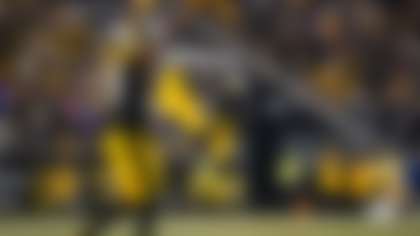After a close loss, it is a given that you will hear a staple of coachspeak in the defeated team's postgame news conference: "No one play cost us the game." This is intended to shield any one particular player from blame. And for the most part, it's true. Still, one play can make the difference between winning and losing -- and when that loss keeps you from going to the Super Bowl, it is the type of thing that will have you waking up in a cold sweat in the middle of the night for months on end.
Let's take a look at some moments the Green Bay Packers undoubtedly would like to have back from their jaw-dropping collapse in Sunday's NFC Championship Game:
The onside kick
During the course of a season, you will have roughly 120 practices and twice as many meetings. A majority of those teaching opportunities will be about covering special-teams execution and specific game situations with your players. The Green Bay Packers -- specifically, special teams coordinator Shawn Slocum -- are surely no exception. I promise that every time Slocum discussed, walked through or full-on practiced the handling of an onside kick, he stressed that the front line must BLOCK the first wave of defenders, allowing the second level -- manned by the players who have the best hands on the team -- to focus solely on catching the ball. This has been, is now and will always be the standard way to defend an onside kick -- it is a fundamental truth that will never change, no matter how many innovations impact the game. Front line blocks; second line recovers.
When Slocum put third-string tight end Brandon Bostick on the front line of the onside-kick return team, you know this was a point of emphasis. Bostick entered the league in 2012 as an undrafted free agent out of Newberry College in South Carolina; I'm sure he's on the roster primarily because of his ability to play special teams. Head coach Mike McCarthy and general manager Ted Thompson are among the most committed in the NFL when it comes to building a large collection of tight ends and linebackers, seeking out those with the body type and ability to function outside of their specific position groups.
So when Seattle tried an onside kick with just over two minutes left and the Packers clinging to a five-point lead, what possessed Bostick to try and catch the ball himself? Jordy Nelson, owner of one of the best set of hands in the NFL, was camped out under the ball, just waiting for it to come down. Chris Matthews, a backup receiver for the Seahawks -- and the man Bostick was supposed to block -- screamed through, putting himself in position to recover the kick after Bostick muffed it. Bostick shouldn't have even been watching the ball after it took that first large hop; once the ball went up, he should have found Matthews and blocked him. Period. Instead, the Seahawks got the ball back, scored a touchdown and wound up winning in overtime.
Plays like that are the ones that make you wonder why you spend all that time meeting and practicing. Why sleep in your office, nervously covering every aspect of the game so that nothing surprises the team on Sunday, if it's all going to come crashing down thanks to a mistake like that? Now that the Packers' season is done, feel free to call Slocum anytime in the middle of the night; he'll likely be wide awake.
The missed red-zone opportunities
And who will have just as much trouble sleeping? Mike McCarthy. Because while the failed recovery was the play that ultimately meant the difference between winning and losing, it wasn't the sole reason the Packers lost. During the game, I sent out a tweet suggesting that Green Bay scoring just six points off two Seattleturnovers that landed the Packers deep in Seahawks territory in the first quarter was going to bite them. I was wrong, because in hindsight, six points would have been exactly enough for them to win, had they executed the onside recovery correctly. When I sent the tweet, I wasn't necessarily criticizing the decision to take the points rather than go for touchdowns; I was simply saying that the outcome was really a situational win for Seattle, given the circumstances.
If I had been in McCarthy's shoes at the time, I probably would have kicked the first 18-yard field goal, just to ensure points got on the board. But I think I would have eschewed the second field-goal try in favor of a kill shot, particularly on the road. The Packers had a chance to secure a two-possession lead before Seattle had even completed a single pass. Instead, they walked away with fewer points than they would have gotten from a single touchdown and extra point. If the Packers had gone for it on that second fourth-and-goal, the worst-case scenario would have seen the Seahawks getting the ball back on their own 1-yard line coming off two straight turnovers.
Remember, though, mathematically speaking, McCarthy made the right decision. Those six points were just enough to win, had Bostick done what I know he was coached to do over and over and over again. But the game of football isn't always perfect. And it's certainly more than just a math equation. So while the six points were technically enough, getting into the end zone on at least one of those opportunities would have gone a long way toward taking even more wind out of the sails of the Seahawks and their home fans heading into halftime. Instead, after a first half in which Seattle turned the ball over four times, accrued seven penalties and earned three first downs, the Seahawks were down just two possessions -- and clearly had a fighting chance.
Follow Brian Billick on Twitter @CoachBillick.












